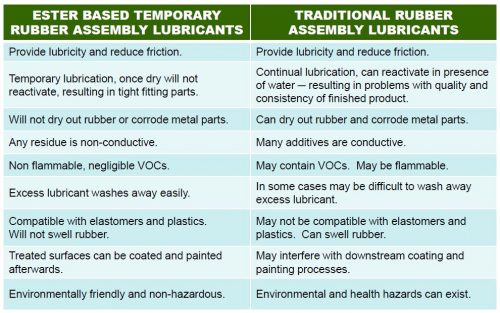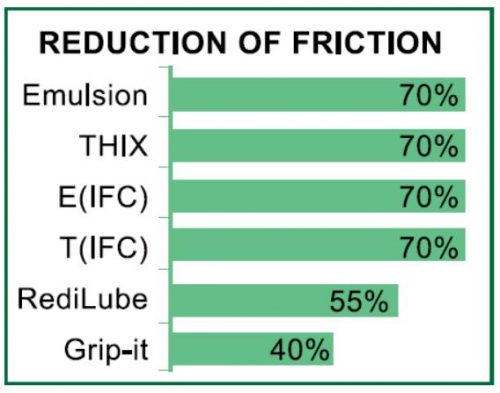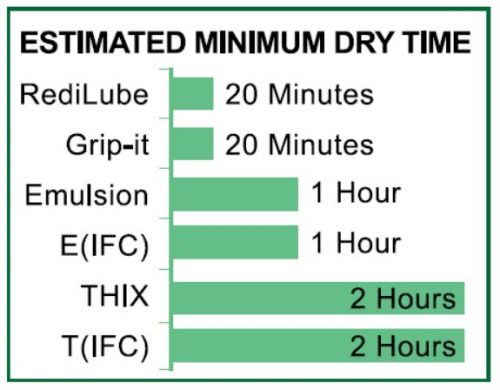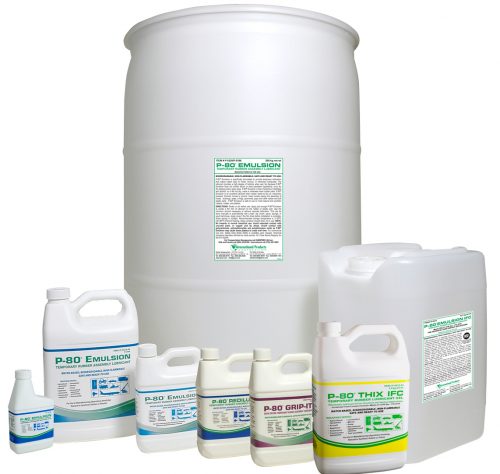5 Step Guide to Choosing The Right Assembly Lubricant
Tweet
 Print
Print
Rubber can be difficult to install, remove or manipulate. It’s not unusual for rubber parts to slip or break during assembly or not fit into place: an O-ring may get twisted, a heater hose may not fully insert, or a gap can appear in a waterproof seal. Improper assembly can lead to a multitude of problems including destroyed parts, invalidated warranty claims, product recalls, and worker fatigue or injury.

Coating rubber parts with a lubricant before assembly helps avoid some of these problems. For convenience, workers often reach for substances that are already present on the manufacturing floor like soap and water, alcohol, gasoline, motor oil, petroleum jelly, or silicone spray. While these products do provide lubrication, they may also introduce health and safety risks, functionality issues, and damage rubber parts.

The Five-Step Guide to Choosing the Right Temporary Assembly Lubricant:
1. Lubrication Needed
Sometimes you need a lot of lubrication, sometimes just a bit. Different lubricants will reduce friction by varying amounts depending upon their chemistry. Find a formula that is right for your application.

2. Dry Time
Some temporary lubricants dry quickly while others take longer to fully dry.
Quick-drying lubricants are frequently used in assembly applications in which the parts undergo pressure testing or movement shortly after assembly. In these cases, it’s important to have the part firmly in place before the next step in the assembly process.
Other assembly applications may take longer, or the parts may need to be manipulated a few times before the assembly is complete. In these instances, you may benefit from a slower drying temporary lubricant.
Yet, in other assembly operations, achieving maximum lubrication may be the primary goal and the dry time of the lubricant is less important. This often occurs with extremely tight-fitting parts.

The dry time of temporary assembly lubricants can be altered by adjusting the amount applied, the method of application, part tolerance, material porosity, and the environment.
3. Compatibility
It’s important to check the compatibility of any chemicals that will come in contact with your parts and equipment. What types of surfaces are they made of? Ask the lubricant manufacturer if their product is compatible with the specific type of rubber, metal and/or plastic found in your parts and equipment.
Lubricants will be absorbed more quickly by porous rubbers, like Buna-N and EPDM, than by plastics and coated rubbers. You may want to choose a quicker drying formula for less porous surfaces.
Avoid using lubricants that can cause rubber parts to swell or dry out, like alcohol or petroleum-based products. Look for a product that is compatible with the parts it will come in contact with.
4. Application Method
What type of application method will work best for your unique process? Common methods of application include dunking and dipping parts, using brushes, sponges and sprays, and using automated solutions. Make sure the lubricant you choose will work well with the best application method for your unique situation.
5. Safety
Consider the environmental impact of any lubricants you are using. Look for products that are non-hazardous and non-flammable, making them safe for workers and the environment. Many companies are moving toward biodegradable assembly lubricants.
Choose an assembly lubricant that will work well, yet meet all of your safety requirements and federal regulations.
The Manufacturer Matters
When you select a temporary rubber assembly lubricant you should be equally as concerned with the support provided by the manufacturer as you are with the product performance. An experienced and knowledgeable manufacturer can offer technical guidance and provide the best product to meet your needs. At International Products Corporation, we are committed to assisting customers by providing compatibility studies, toxicology reports, regulatory compliance, free product samples, and technical support.
Want to try P-80 for your assembly or repair needs? Request a free sample.
Contact our technical team to help you find the best solution for your assembly needs.

Tweet
 Print
Print